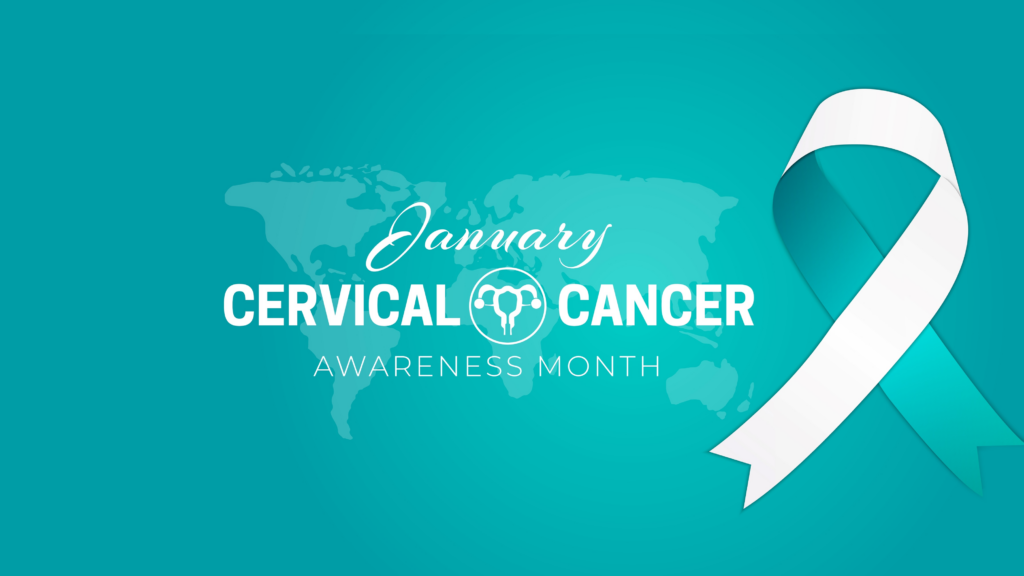Cervical Cancer Awareness Month 2024, also known globally as world cervical cancer awareness month, is observed for the entire month of January. This significant healthcare event aims to raise awareness and advocate for the elimination of cervical cancer.
Cervical cancer is a condition characterized by the abnormal growth or proliferation of the cells lining the cervix — the part that connects the uterus and the vagina — or the lower portion of the uterus.
Globally, cervical cancer ranks as the fourth most prevalent cancer in females, behind breast, colorectal and lung cancer. It accounted for around 600,000 new cases and 340,000 deaths in 2020.
Despite being one of the most preventable and treatable types of cancer when diagnosed early, cervical cancer continues to have a significant negative impact on women worldwide. The US Centers for Disease Control and Prevention (CDC) reports that annually, approximately 11,500 new instances of cervical cancer are identified in the US, leading to around 4,000 fatalities among women due to this disease. To combat this, increasing screening and prevention are vital in the efforts to eradicate cervical cancer.
History and Significance of Cervical Cancer Awareness Month
Cervical Cancer Awareness Month plays a vital role in spreading evidence-based information, promoting screening and human papillomavirus (HPV) vaccination and highlighting the importance of the World Health Organization (WHO) Global Cervical Cancer Elimination Initiative, started in 2020. As a part of the initiative, the WHO set a goal to eliminate cervical cancer as a public health concern globally by 2120. To reach this goal, WHO’s Member States should strive to meet the following interim scale-up targets by 2030:
- 90 percent of girls fully vaccinated with the HPV vaccine by the age of 15;
- 70 percent of women undergo a high-performance screening test by 35 years of age and again by 45 years of age;
- 90 percent of women with pre-cancer receive treatment, and 90 percent of women with invasive cancer receive appropriate management.
Different global and local organizations have united to increase awareness about cervical cancer through numerous campaigns and activities, highlighting the crucial significance of early diagnosis, treatment and preventive measures for cervical cancer.
XTALKS WEBINAR: Trial Recruitment Optimization: 5 Reasons Why the Right People Aren’t Joining Your Trials
Live and On-Demand: Monday, February 5, 2024, at 3pm EST (8pm GMT/UK)
Register for this free webinar to hear direct-from-patient insights on common barriers for clinical trial recruitment and continuous engagement, and more.
Cervical Cancer Awareness Month 2024 Theme: Learn. Prevent. Screen.
The theme of Cervical Cancer Awareness Month 2024 is “Learn. Prevent. Screen.” This theme emphasizes the importance of educating individuals about reducing the risks of cervical cancer and accentuates the life-saving significance of regular screenings.
The leading cause of cervical cancer is persistent infection with high-risk types of HPV, a widespread family of viruses that are transmitted through sexual contact. Since almost all cases of the disease are caused by HPV infection, vaccines that protect against the virus could prevent the vast majority of cases. The HPV vaccine has been around since 2006. In that time, rates of cervical cancer incidence have dropped significantly among vaccinated women.
Regular cervical screening can effectively prevent both localized and non-localized cervical cancer. The HPV test and the Pap test are screening tests that can help prevent cervical cancer or find it early. Since the 1960s, community-based screening has successfully contributed to the prevention of cervical cancer.
A study published in 2019 revealed that individuals undergoing screening every three years experienced an 83 percent reduction in non-localized cancers and a 48 percent reduction in stage I cancers compared to women who had not been screened in five years.
Related: Abbott’s HPV Test Gets FDA Approval for High-Risk HPV Detection and Cervical Cancer Screening
Examples of Treatment Options for Cervical Cancer
The approach to treating cervical cancer is determined by the stage and progression of the disease and may involve surgery, radiation, chemotherapy or a combination of these methods.
Surgery is a prevalent and effective method for addressing various early-stage cancers by physically removing the cancerous tissue. For the treatment and management of cervical cancer, radiotherapy and chemotherapy are frequently used alongside surgery.
Cisplatin, a platinum-based chemotherapeutic agent, has been one of the most potent single drugs used over the past three decades for treating cervical cancer. Recent advancements in targeted therapies for cervical cancer include medications like Avastin (bevacizumab), Keytruda (pembrolizumab) and Tivdak (tisotumab vedotin-tftv).
Investigational New Drugs (INDs) in Clinical Trials for Cervical Cancer
Progress in understanding the molecular aspects of cervical cancer has paved the way for the development of targeted therapies. These treatments focus on proteins specifically produced by the cancer cells, which play a role in their growth, proliferation and spread.
Among these innovative treatments, cadonilimab, a dual-action PD-1/CTLA-4 bispecific antibody used alongside platinum-based chemotherapy, with or without bevacizumab, has demonstrated encouraging outcomes in a Phase III trial for recurrent/metastatic cervical cancer. Cadonilimab is under development by Akeso, a biopharma company headquartered in China.
In another example, in May 2023, the US Food and Drug Administration (FDA) approved Precigen’s IND application to begin a Phase II study of the first-in-class PRGN-2009 Off-the-Shelf (OTS) AdenoVerse immunotherapy, used in conjunction with pembrolizumab, for individuals with recurrent or metastatic cervical cancer.












Join or login to leave a comment
JOIN LOGIN